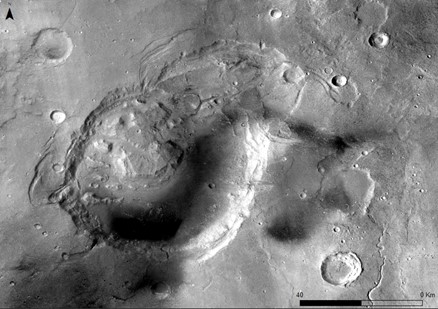 HKU Department of Earth Science
HKU Department of Earth Science
Seminar

Martian ancient calderas – characteristics and distribution of under-recognized early Martian volcanism
-
Date
February 8,2022
-
Time
4:00PM - 4:30PM
-
Speaker
Ms. Yin Yau CHU Department of Earth Sciences, HKU
Volcanism throughout late Noachian to Amazonian shaped the current Martian landscape. Commonly recognised volcanic features on Mars includes large shields, lava flows, cones, and summit craters. From massive ancient calderas sitting on topographic rise regions in the Circum-Hellas Volcanic Province, to large shields of the Tharsis and Elysium regions that marks the youngest volcanic centres; Martian volcanism is generally characterised by construction of topographic rise and formation of summit calderas. However, several heavily degraded craters within the plains of the Arabia Terra would argue otherwise. These craters of potential volcanic origin, lack distinctive impact features and present evidence of explosive volcanic activities. The proposed late Noachian to early Hesperian ancient explosive volcanic constructs, termed “plain style caldera complexes”, are characterised by low topographic relief, arcuate faulting, steep scarps, floor units composed of friable materials, flow deposits and fractured crustal blocks. With limitation in lithological survey on Mars, caldera structures are easily mistaken as degraded impact craters until proven otherwise.
Further investigation is needed to validate the hypothesis and establish connections between the proposed caldera constructs candidates. Therefore, a comparison among the candidates and with Earth analogue would enable us to reconstruct the nature of Martian palaeo-explosive volcanism in late Noachian to early Hesperian.
Additional information: Ms. Yoyo Yin Yau CHU, yycyoyo@connect.hku.hk
